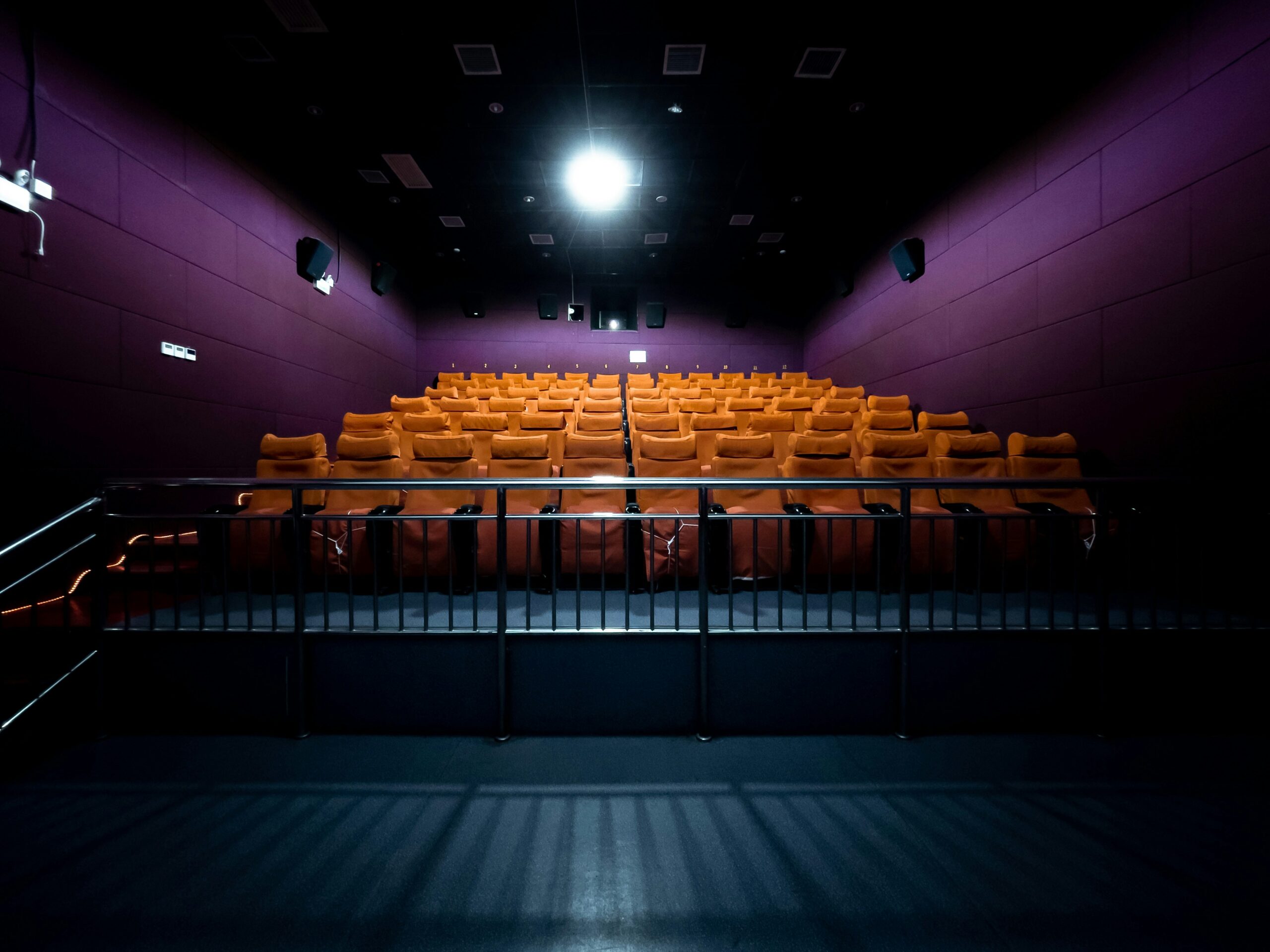Ever wondered what makes Christopher Nolan’s films so visually striking? Beyond the intricate plots and mind-bending twists, there’s a masterful approach to cinematography that sets his work apart. Let’s explore how Nolan uses visual techniques to enhance his storytelling and create some of cinema’s most memorable moments.

The IMAX Experience: Making Every Frame Count
When you watch a Nolan film on an IMAX screen, you’re not just seeing a bigger picture – you’re stepping into his world. Films like The Dark Knight, Interstellar, and Dunkirk showcase the power of IMAX cinematography. The incredibly detailed, crystal-clear imagery doesn’t just make the films look spectacular; it creates an immersive experience that pulls viewers directly into the action.
Nolan’s commitment to IMAX goes beyond simply using the format. He specifically designs sequences to take advantage of the larger frame size. In Interstellar, the space sequences utilize the full IMAX aspect ratio to convey the vastness of space. The towering waves on the water planet become even more terrifying when they fill the entire IMAX screen, dwarfing the human characters and emphasizing their vulnerability.
The Power of Practical Effects
While many modern directors rely heavily on CGI, Nolan takes a different approach. He believes in the power of practical effects – real sets, physical props, and actual stunts. This commitment to practical filmmaking creates a tangible reality that audiences can feel.
The rotating hallway fight in Inception serves as a perfect example. The production team built a massive rotating set, allowing the actors to perform their scenes while the environment literally turned around them. This practical approach not only looks more convincing but also helped the actors deliver more authentic performances since they were responding to real physical forces.
In Tenet, the airplane crash sequence was filmed using a real Boeing 747, rather than relying on miniatures or CGI. This dedication to practical effects creates a visceral impact that digital effects often struggle to match.
Visual Time Management
Nolan is famous for his complex narratives, and his visual approach helps viewers navigate these intricate stories. His mastery of visual time management extends beyond simple flashbacks and flash-forwards.
In Memento, the parallel storylines are distinguished through color: the chronological sequence appears in black and white, while the reverse-chronological sequence is in color. This visual coding helps viewers track their position in the narrative without requiring explicit exposition.
Dunkirk takes this concept further by weaving together three different timelines – one week on land, one day at sea, and one hour in the air. Nolan uses distinct visual styles and pacing for each timeline, helping viewers understand the temporal relationships between events while maintaining tension across all three narratives.
Mastering Light and Shadow
Lighting in Nolan’s films isn’t just functional – it’s storytelling. His approach to lighting demonstrates a deep understanding of both technical craft and emotional impact.
The Dark Knight trilogy showcases this mastery particularly well. Gotham City’s shadows aren’t just atmospheric; they represent the moral ambiguity at the heart of the story. The contrast between light and shadow becomes more pronounced as the trilogy progresses, reflecting the escalating conflict between order and chaos.
In Interstellar, Nolan and cinematographer Hoyte van Hoytema used natural lighting whenever possible, creating a documentary-like feel that grounds the film’s spectacular science fiction elements in reality. The harsh shadows of space contrast with the warm, earthly light of the farm scenes, emphasizing the emotional distance between Cooper and his family.

The Art of the Long Take
Nolan often employs extended, unbroken shots to build tension and immerse viewers. These single-take sequences demand precise choreography and timing, but the results can be breathtaking.
Dunkirk features several remarkable long takes that follow soldiers through the chaos of war. These unbroken sequences create a sense of real-time danger and claustrophobia that wouldn’t be possible with rapid cutting. The camera becomes an unseen witness to events, allowing viewers to experience the tension without the relief of a cut.
In Inception, long takes are used to establish the geography of complex dream spaces, helping viewers maintain their orientation in increasingly surreal environments. This technique becomes crucial during the film’s climactic sequences, where multiple levels of reality unfold simultaneously.
Location, Location, Location
Rather than relying on green screens, Nolan prefers shooting in real locations. This commitment to authenticity extends to even the most challenging environments.
The mountain fortress in Inception was filmed in the Canadian Rockies, while the ice planet scenes in Interstellar were shot in Iceland. These real locations provide a texture and atmosphere that green screen environments struggle to replicate. The harsh conditions often contribute to the performances, as actors respond to genuine environmental challenges.
Visual Themes and Symbolism
Watch closely, and you’ll notice how Nolan’s cinematography reinforces his films’ themes through recurring visual motifs and careful composition.
In Tenet, mirrors and reflective surfaces appear frequently, emphasizing the film’s exploration of time inversion and parallel actions. The composition often places characters on opposite sides of the frame when they’re in conflict, visually representing their opposing viewpoints or goals.
Inception uses recurring visual metaphors of stairs and mazes to reinforce the idea of layered reality. The famous Penrose stairs sequence isn’t just a cool visual effect – it’s a perfect representation of the film’s themes of perception and reality.
Key Takeaways for Aspiring Filmmakers
- Story drives every visual decision. Whether it’s camera placement, lighting, or special effects, each choice should serve the narrative.
- Don’t be afraid to innovate. Nolan consistently pushes technical boundaries to achieve his vision, but always in service of the story.
- Collaboration is crucial. His long-standing partnerships with cinematographers like Wally Pfister and Hoyte van Hoytema demonstrate the importance of building strong creative relationships.
- Technical excellence matters. Understanding the tools of filmmaking – from IMAX cameras to lighting techniques – allows for more creative freedom.
Practical Applications
If you’re interested in filmmaking, consider these lessons from Nolan’s approach:
- Understand your technical tools, but don’t let them overshadow your story
- Consider practical solutions before turning to digital effects
- Use visual elements intentionally to support your narrative
- Think about how camera movement and positioning can enhance emotional impact
- Study how different lighting techniques can affect mood and atmosphere
- Plan your shots to maintain continuity and spatial awareness
Looking Forward
Christopher Nolan’s approach to cinematography shows us that visual storytelling is about more than just creating beautiful images. It’s about using every visual element to enhance the narrative and emotional impact of your film. Whether you’re a filmmaker or simply a film enthusiast, understanding these techniques can deepen your appreciation of the craft.
Next time you watch a Nolan film, pay attention to these visual elements. Notice how each frame, each camera movement, and each lighting choice contributes to the overall story. Look for the practical effects and consider how they enhance the viewing experience. Consider how the IMAX format affects your perception of scale and space.
Remember that great cinematography isn’t about following a formula – it’s about finding the right visual language to tell your story. Nolan’s success comes not just from his technical expertise, but from his understanding of how visual elements can work together to create a complete cinematic experience.







